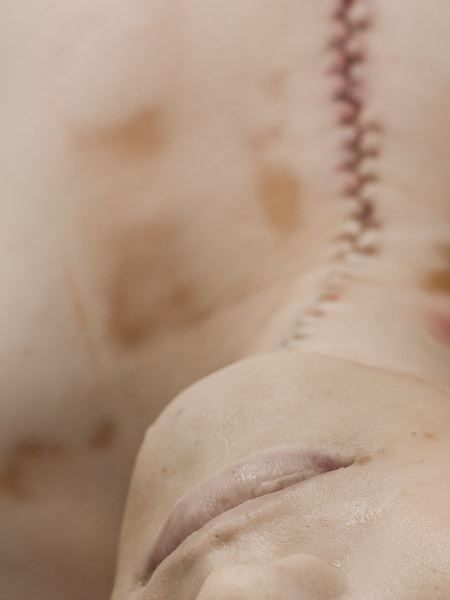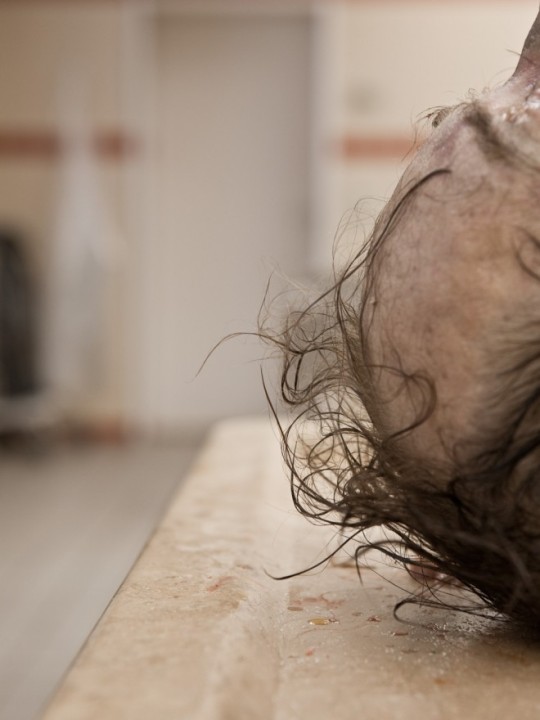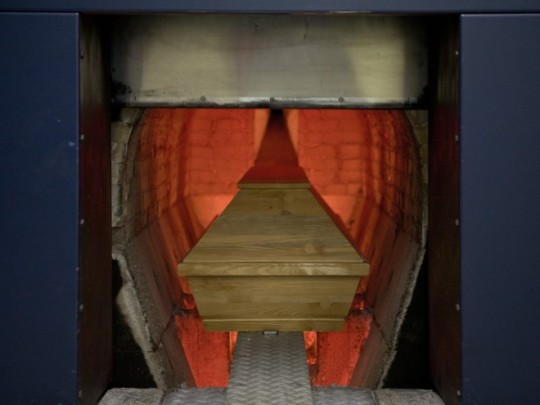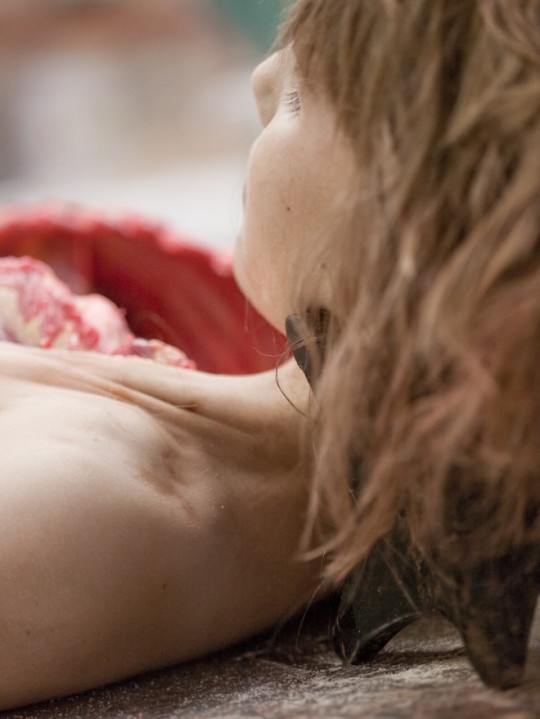Text
massacre at pride parade in poland
this is a signal boost. please share it, for the love of god, media doesn’t cover this enough
yesterday my city held its first pride parade. we were warned by the far right that they won’t allow it to happen, we knew it was going to be bad, but not this bad. nationalists from all across the country took trains here and occupied the area where parade was supposed to start, waiting to begin a massacre. the first people to have appeared at the spot were brutally beaten, there are 4 officially unconfirmed (clarification: this might be fake news, nobody knows anything) deaths of teenagers. they were attacking children they pledged to protect from “gay pedophiles”.
i saw them covered in blood. i saw them crying. i saw them running, hiding in nearby shops, chased through the streets by organised groups of nazis that kept screaming: WE’LL KILL ALL FAGGOTS. 50 grown men against a single kid. 10 different men against a 14-year-old girl. she was thrown on the ground, kicked, and beaten, because she had a rainbow on her shirt.
the parade was disrupted, but continued to march on. the amount of rocks, bricks, glass beer bottles, bottles with piss, rotten eggs, explosives that were thrown at us, is uncountable. my throat is sore from screaming RUN RUN RUN each time some landed nearby. then they exploded. have you ever experienced the ringing in your ears, so frequently shown in war movies after a grenade detonates nearby? i did, yesterday. people have burns, traumatic brain injuries, broken bones, broken noses, not to mention bruises and cuts. i saw so much blood that day.
we were choking because of smoke and pepper spray that police used against those who attacked them. them, not us. people who threw rocks/glass/bricks/explosives/eggs, slicing our temples, cracking our skulls, breaking our bones, are facing no consequences, unless they’ve attacked the policemen. 25 had charges pressed against them. 25 out of thousands who gathered with the sole purpose of attacking us. they outnumbered and surrounded us. they chased people after the parade ended, screaming death threats. screaming that they will find us through the photos, and kill us.
do you know what our right-wing media does? they’re claiming we, the peaceful parade whose numerous members are currently hospitalized with terrible injuries, were the ones who threw rocks/glass/bricks/explosives/eggs at “good christians who were protecting traditional values”. do you know what our church does? it’s thanking those who attacked us.
the church approves violence.
and so does the government.
welcome to poland. run.
21K notes
·
View notes
Photo

In 2018, archaeologists unearthed a bizarre discovery at Star Carr Mesolithic archaeological site around five miles south of Scarborough in North Yorkshire, England. Here, they discovered deer skulls with eye holes carved out daring back 11,000 years ago. It’s theorised that the deer’s head may have been used as camouflage while out hunting.
1K notes
·
View notes
Text
it dont even feel like june it dont even feel like any month we just floatin thru time
1M notes
·
View notes
Text
Thought I saw a shooting star but the neighbors above me are flicking cigarette butts out the window
258K notes
·
View notes
Text
Ask by killers names
Bundy: What do you do in your life?
Ramirez: Are u scared of the night?
Dahmer: Favourite meal?
Manson: What are you scared of the most?
Kemper: Favourite mugshot?
Speck: Have tattoos?
Gacy: Favourite horror movie?
Rader: Why you interested with true crimes?
Zodiac : What is your name?
Wuornos: Are you gay/lesbian?
Atkins: What Subculture Do You Belong To?
Cunanan: What is your hobby?
Bryant: Have mental illness?
Spancer: Do you hate Mondays?
Kinkel: Favourite gif?
Klebold: Your fetish?
Harris: What make you angry?
Roof: Send selfie or pet pic?
Rodger: Are u a virgin?
Lane: Do you ever send a letter to killers?
Auvinen: Do u belive with God/ have religion?
Loukaitis: Favourite killer quote?
Lanza: Are u a vegetarian?
Seung-Hui: What make u inspire?
Stair: What your phone wallpaper look like?
Cruz: Do u ever send someone your nudes?
Ivanov: Favourite tumblr?
3K notes
·
View notes
Photo










If you’ve ever watched a crime scene drama like CSI, you’ve probably asked yourself, “Is that what really happens?” German photographer Patrik Budenz wondered the same thing, but unlike most of us, he decided to put in the time to find out.
To sate his curiosity, Budenz spent months convincing the Institute of Legal Medicine and Forensic Sciences in Berlin to give him full access to their facilities. For years after, he was constantly around cadavers. The results are two photo series: search for evidence (published as a book in 2011) is about forensic scientists and post mortem (published as a book this year) covers all the places dead bodies visit after death — funeral homes, crematoriums, etc.
“I wanted to confront myself with death and develop my view on the topic more fully with post mortem,” says Budenz. “Instead of shooting photos from a distance [like in search for evidence] I reduced the physical and mental distance in post mortem.”
While far from the only photo project on the subject, the tone and balance of Budenz’s projects stand out. They convey a peaceful acceptance of mortality that can be uncomfortable at first and then calming. Part of the discomfort is due to his unwillingness to pull many punches. With full access to these various institutes of death, Budenz was witness to some shocking visuals. He’s made photos of people sawing into heads, photos of people pulling brains out of bodies, photos of people smiling while they work with human body parts, and one particularly horrifying photo of a 13-year-old girl with her chest cut open.
Realizing most people would be taken aback by scenes like this, Budenz says he tries to be as sensitive but also as truthful as he can. The forensic scientists sawing open bodies to conduct investigations while smiling, for example, is a real part of a process most of us prefer not to think about. Dealing with human body parts is a serious job, but just like any job, it becomes routine over time.
“For most of these people, this becomes just a normal workplace,” he says. “Like other people who work in offices, they talk about what happened the day before or what happened that evening, typical chatting. At the same time, they also have a certain sensitivity because of where they are.”
So far, the reaction to the work has been positive. Some people think the photos go too far, and some people have to warm up to them, but he says “curiosity usually takes over.”
In the post mortem boom, the only text he includes is an email from a woman in China who titles her message, “i really like your photos of the dead.” In the message she talks about how hard it was to confront her grandfather’s death, but ends by saying, “i was shaking that night when he passed away, i didn’t even fall to sleep. i couldn‘t sleep alone for three years after he passed away. now i can sleep alone.”
Budenz says he included that email because he thinks it gets right to the point of the photos. Death is hard to deal with, but with time it can become more approachable and a little easier to understand.
All photos: Patrik Budenz
5K notes
·
View notes
Photo

A woman outside Holloway Prison protesting the death penalty in 1923.
5K notes
·
View notes
Photo

WWI trench in France’s Red Zone, or “Zone Rouge”. Large swathes of the Western Front were declared uninhabitable no go zones after the First World War, and highly toxic environments remain. But for much of the Red Zone, the land has recovered its natural life. [1024x680]
282 notes
·
View notes
Text
I hate this so much
Black Panther is technically a furry.
880 notes
·
View notes
Text
I just love sleep so much ……. like u just close ur eyes and ur gone bitch ………… brain logged the fuck off ……… powerful
238K notes
·
View notes
Photo

Methods of Death & How They Feel
Drowning: When victims eventually submerge, they hold their breath for as long as possible, typically 30 to 90 seconds. After that, they inhale some water, splutter, cough and inhale more. Survivors say there is a feeling of tearing and a burning sensation in the chest as water goes down into the airway. Then that sort of slips into a feeling of calmness and tranquility. That calmness represents the beginnings of the loss of consciousness from oxygen deprivation, which eventually results in the heart stopping and brain death.
Heart Attack: The most common symptom is chest pain: a tightness, pressure or squeezing, often described as an “elephant on my chest”, which may be lasting or come and go. This is the heart muscle struggling and dying from oxygen deprivation. Pain can radiate to the jaw, throat, back, belly and arms. Other signs and symptoms include shortness of breath, nausea and cold sweats.
Bleeding to Death: Anyone losing 1.5 litres – either through an external wound or internal bleeding – feels weak, thirsty and anxious, and would be breathing fast. By 2 litres, people experience dizziness, confusion and then eventual unconsciousness.
Fire: Burns inflict immediate and intense pain through stimulation of the pain nerves in the skin. To make matters worse, burns also trigger a rapid inflammatory response, which boosts sensitivity to pain in the injured tissues and surrounding areas.As burn intensities progress, some feeling is lost but not much. 3rd degree burns don’t hurt as much as 2nd degree burns.
Decapitation: Very quick. Consciousness is said to continue for a few seconds after decapitation. It’s thought to be painless. But the separation of the spinal cord and brain may cause severe pain.
Electrocution: Higher currents can produce nearly immediate unconsciousness. The electric chair was designed to produce instant loss of consciousness and painless death, but that’s debatable. It’s been proposed that prisoners could instead be dying from heating of the brain, or perhaps from suffocation due to paralysis of the breathing muscles instead of electrocution itself because the skulls of the wall are a thick and powerful insulator.
Falling from a height: Another instantaneous death. Survivors of great falls often report the sensation of time slowing down. The natural reaction is to struggle to maintain a feet-first landing, resulting in fractures to the leg bones, lower spinal column and life-threatening broken pelvises. The impact traveling up through the body can also burst the aorta and heart chambers.
Hanging: The rope puts pressure on the windpipe and the arteries to the brain. This can cause unconsciousness in 10 seconds, but it takes longer if the noose is incorrectly sited. Witnesses of public hangings often reported victims “dancing” in pain at the end of the rope, struggling violently as they asphyxiated.
Lethal injection: . First comes the anaesthetic thiopental to speed away any feelings of pain, followed by a paralytic agent called pancuronium to stop breathing. Finally potassium chloride is injected, which stops the heart almost instantly. Eyewitnesses have reported inmates convulsing, heaving and attempting to sit up during the procedure, suggesting it’s not always completely effective.
Vacuum (In Outer Space): When the external air pressure suddenly drops, the air in the lungs expands, tearing the fragile gas exchange tissues. This is especially damaging if the victim neglects to exhale prior to decompression or tries to hold their breath. Oxygen begins to escape from the blood and lungs. Human survivors from NASA often report an initial pain, like being hit in the chest, and may remember feeling air escape from their lungs and the inability to inhale. Time to the loss of consciousness was generally less than 15 seconds.
(Source & More Information)
169K notes
·
View notes
Photo


On 11 May, 2011, Amy Pitzen, who lived in Aurora, Illinois, with her husband, Jim, and their 6-year-old son, Timmothy, removed Timmothy from school, claiming there was a family emergency. The two then spent a few hours at a local zoo before driving to Gurnee and checking in to a water park hotel. The next day, Amy and Timmothy travelled to Wisconsin Dells and checked into another water park hotel.
Finally, on 13 May, Amy called her family and informed them that Timmothy was alive and well. They confirmed that they could hear Timmothy chatting in the background. This was the last time the family heard from Amy or Timmothy. The next morning, Amy was found deceased in their hotel room, having slashed her wrists. Timmothy was nowhere to be seen. Amy left behind a suicide note that explained that Timmothy was “with people who love him and will take care of him,” but that he would never be found.
Timmothy’s booster seat and his backpack were not inside Amy’s car but investigators found traces of blood inside the car. Family explained that Timmothy had a nosebleed inside the car not long before going missing and it was undetermined if the blood was fresh or old. There was mud and dirt over the car, indicating that it had been somewhere rural. Prior to Amy’s body being found, she was spotted on a surveillance camera wearing clothes that were never found. Timmothy Pitzen has still not been found and nobody knows why Amy decided to abduct him before committing suicide.
2K notes
·
View notes
Photo

Saint Denis was a third century martyr who, according to legend, picked up his head after it was cut off and walked six miles while delivering a sermon.
235 notes
·
View notes
